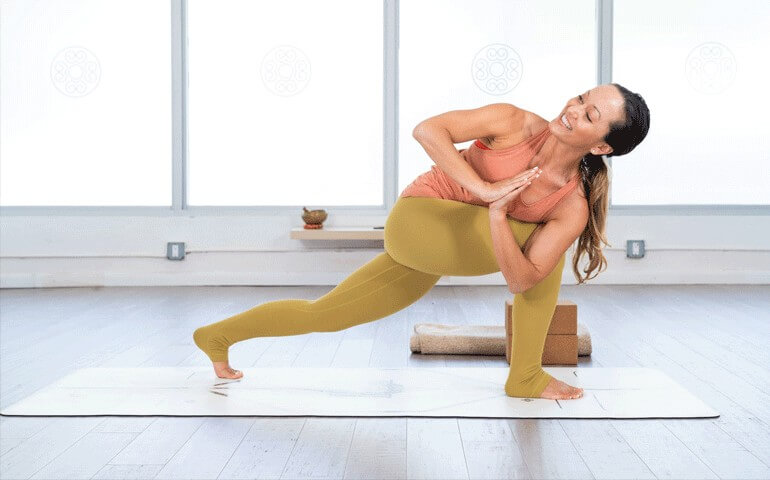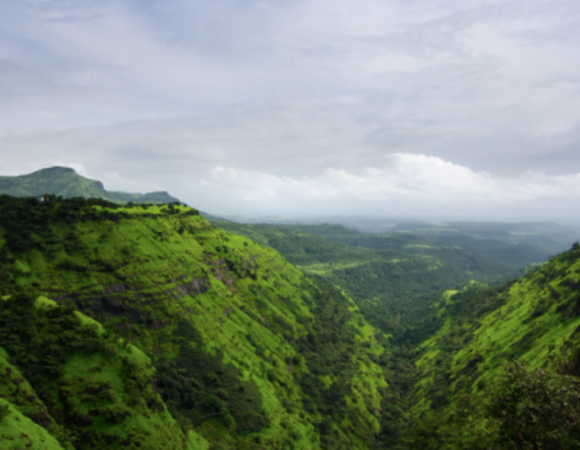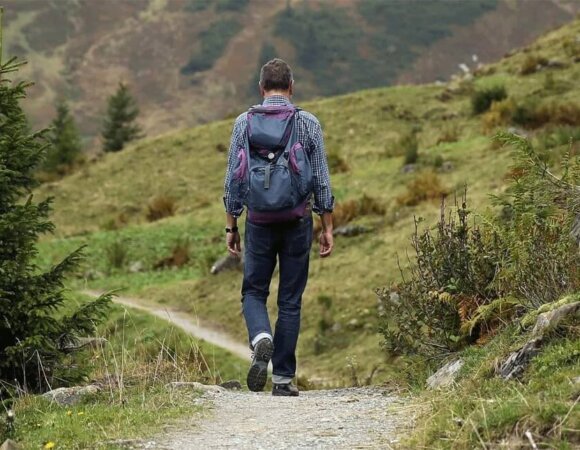11 Ashtanga Vinyasa Yoga Tips for Beginners
Table of Contents
ToggleWith modernization and digitalization, we chose to leave certain things behind us, choosing a far more unhealthier lifestyle over the healthy one. We are making ourselves more and more vulnerable to mental health deterioration, as well as our physical well-being is at stake.
Now is the time we need to put a stop to it. Save up some time for yourself, apart from your work, your worries, your responsibilities. It is more important to indulge in yourself and being healthy.

Ashtanga Vinyasa Yoga is one such age-old tradition that our ancestors followed to keep their minds calm and clean. In general, yoga is the food for the soul, it brings mental peace, and lets you understand things better with crystal clear thoughts. It’s like a refreshing juice after a long day.
There are various kinds of yoga forms practiced around the world. One such yoga form is Vinyasa yoga. It is also one of the most popular forms of yoga across the globe. The origin of the word “Vinyasa” is from the Sanskrit word “Nyasa” and “Vi” meaning “to place in a special way”.
In Yoga, it signifies the specialty of the “Vinyasa” from other yoga forms. In Vinyasa the transition from one pose to another is synced with your rhythm of breathing, the transition from one pose to another is the core of Vinyasa.
Vinyasa is a very active, dynamic form of yoga. If you have already looked up a bit about it then you would know by now that its poses differ depending on your yoga teacher.
As most yoga forms, it is ideally practiced in the morning. It brings clarity to the mind and demands a great amount of focus and concentration.
Benefits from Ashtanga Vinyasa yoga
1. Fat Burning
This is the most common cause of practicing Vinyasa yoga nowadays. As we have already said, Vinyasa is a very dynamic and engaging form of yoga, it burns a good amount of fat and is practiced properly.
2. Muscle Development
With Vinyasa you use your own weight as resistance. As any other form of strength training and resistance training, Vinyasa will also help you to shape and increase muscle mass.
3. Increased Flexibility
Yoga gently increases your flexibility by slowly lengthening your muscles. It increases your blood circulation, makes your movements smoother than ever. Vinyasa yoga involves more dynamic stretching, which utilizes a more active range of motion to elongate muscles.
4. Improved Cardiovascular Health
As Vinyasa is more active than other forms of yoga, it improves your resting heart rate. The more vigorous your Vinyasa flow is, the more it is a cardio workout. And hence it slowly improves your heart health.
11 Ashtanga Vinyasa Yoga Tips for Beginners
The most perfect time is now. There’s no age bar if you want to start something, and the same goes for yoga as well.
1. Don’t Be Shy
This is the foremost thing you should get into your head, don’t be shy. This is for you, it’s no competition, it’s no race.
Let the teacher know about the difficulties you are facing. Everyone has a different body and it behaves differently for every person.
What others might enjoy, you might not. Don’t let things like that bother you, there is always an alternative.
2. Experience Yoga in General
If you want to start practicing Vinyasa yoga for your own reasons, then I would say it’s better to have a minimum experience with yoga in general.
What I mean by Yoga in general, is about postures, alignment, and other very basic things about yoga and its poses.
Because when you are starting with your Vinyasa yoga classes your instructor will focus more on the transition between the poses, the path (flowing sequence), and syncing it with the breathing rhythm and so on. Vinyasa is fast-paced as compared to other forms of yoga.
3. Focus on the Rhythm
The fun part of Vinyasa is hidden in its rhythm. Once you start getting into it, you get the fun of it. Slowly gain your pace, do not rush into it. You won’t be able to practice as smoothly as your teacher does on your first day. You need some time to gain that pace and those effortless-looking smooth transitions between poses. Indulge more in yourself and your rhythm.
4. Take Up Diverse Postures
Do not just go into a particular set of postures. Ask your yoga teacher to get you into more diverse forms of poses. It amplifies the benefits of Vinyasa yoga as well as you get to explore more kinds of poses.
5. Savasana at the End of the Session is Important
Save enough time for the meditative phase and Savasana at the end part of the session. Vinyasa is not just about dynamism, active movements, and transition, it is also very important to calm down your mind.
The heart of Vinyasa or any other form of yoga is here, it brings peace to your mind and calms your soul. Give it enough time to calm down and exhale and relax your mind after a sweaty Vinyasa session.
This is the phase where everything gets into their place. So don’t ever think it’s less important, rather it is the most important phase to settle things down.
6. Take Breaks If You Need
There’s no strict rule that you have to maintain. It’s your choice and you are in charge of what you want to do.
If you feel the need to take a break or slow down, just sit back and join whenever you feel like. This also helps you to be mentally independent.
7. If it Hurts, STOP!
Always listen to your body, it knows what is best for you. If you feel any kind of pain, this can cause injury which obviously is not desirable. So as soon as you feel pain anywhere, let the teacher know immediately.
Your teacher should be able to provide a safer alternative to the pose. As we have already said, Don’t be shy!
8. Be Patient
Don’t be too impatient to see the benefits already. Yoga is a thing that benefits you in the long term, meaning it also takes longer to see the benefits.
It’s a much more gradual process and a much more long-lasting one. Practice regularly, make a habit, and be consistent.
You will see the benefits, you will feel much better afterward.
9. Support Your Back While Transition to Down Dog
For the health and safety of your lower back, it is important to support your back when you move from a Cobra or Upward facing dog to a Downward facing dog. Focus on your back while the transition.
10. Structure of Vinyasa Yoga Session
The basic structure of Vinyasa is a bell-structured curve. You start the session with a warm-up, usually by a sun salutation, and then move on to the core, where your body is at its peak.
Followed by a calming meditative phase and then finally ending with Savasana.
11. Practice Daily
And the last tip or you can say advice will be to be consistent with your practice. Whatever time you have, invest a part of it daily to Vinyasa.
You won’t regret it. Vinyasa has goodness from both the worlds; typical cardio workout and the yoga world which brings calmness to your mind.
Must-Know Vinyasa Yoga Poses for Beginners
If this is going to be your first ever yoga class, it is good to know some of the poses for beginners beforehand. If you are a complete stranger to yoga then the first few classes will be clueless for you.
The poses, their names, etc are very basic things, it’s like the ABC of yoga. So before you join your yoga class, do your homework.
Get accustomed to the names, the types, how they look like so that you don’t feel absolutely clueless. Here are some very basic Vinyasa yoga poses for you as a beginner. You can also call it your beginner’s guide to Vinyasa.
1. Mountain Pose (Tadasana)
This is a very simple pose to start with. Stand straight with your feet slightly apart from each other, tuck the tailbone slightly such that it faces down towards the floor.
Then inhale and reach your arms overhead straight, keep them parallel to your ears (there are variations to the hand position).
Take long, deep breaths, hold for 3-5 breaths, and slowly take your arms down.
2. Tree Pose (Vrksasana)
With the mountain pose, bring the right foot to touch the inner thigh of your left leg. The right knee should face outwards and the thigh should be in the 45 degrees downward direction.
Keep your neck straight and focus at a fixed point in front of you. Hold for 5-8 breaths and then do the same with the opposite leg.
3. Low Plank Pose (Chaturanga Dandasana)
Do the plank pose, similar to pushups, with your palm flat on the floor, hands shoulder-width apart, and core engaged with legs extended.
Slowly lower down your body by bending your elbows till it’s 90 degrees.
Hold for 1 breath. Then push back up to plank pose from lower plank pose. And do a few repeats as instructed by your yoga teacher.
4. Upward Facing Dog Pose (Urdhva Mukha Svanasana)
From low plank position, drop your waist to touch the floor and flip your toes such that the top of the toes touch the floor.
Now, straighten up your arms while pushing your chest and head up. Face the ceiling and squeeze your shoulder blades. Hold for 3-5 breaths.
5. Downward Facing Dog (Adho Mukha Svanasana)
Set your feet and palm on the floor and lift your hips as high as possible such that your tailbone faces upward.
Keep your legs and back straight with hands shoulder-width apart and legs hip-width apart. Face downwards parallel to your arms. Hold for 5-10 breaths.
6. Forward Fold (Uttanasana)
Start with your body straight standing with your feet slightly apart, then bend forward with head towards your knees.
Place your hand on the floor or pull on the back of your ankles to stretch even more.
As a beginner you might not be able to touch the ground yet, that’s no problem. You will gain flexibility with consistent practice.
7. Seated Forward Fold (Paschimottanasana)
This is similar to the forward fold pose or Uttanasana, the only difference is that here you start with sitting position instead of standing.
Sit on the floor with legs extended in front of you, now bend your hip keeping your back flat. If you can then hold your feet or ankles and let your head hang, and set your neck free. Hold for 5-10 breaths.
That’s pretty much for the beginners. If you search on the internet you will find a plenty of poses, but the ones mentioned above are enough for you. You will gradually move on to more intense poses as you gain flexibility.
Final Words For Ashtanga Vinyasa Yoga Tips for Beginners
This is a complete beginner’s guide for Vinyasa yoga. Obviously, there’s a lot more about Vinyasa, as you go deeper into the form you learn more about it and you will realize there’s still a lot more to learn.
But here we have compiled some of the most important tips to begin your yoga classes and get you prepared to land on your yoga mat. The poses mentioned here are very basic ones.
Do not get into the belief that practicing and getting your hands on difficult poses will prove something. You will miss out on the rhythm. It is a gradual process, you will learn the way it is meant to be, do not rush. Stay healthy, be happy.
Frequently Asked Questions (FAQ’s) For 11 Ashtanga Vinyasa Yoga Tips for Beginners
What is Ashtanga Vinyasa Yoga?
Ashtanga Vinyasa Yoga is a dynamic and physically demanding style of yoga that synchronizes breath with a progressive series of postures to produce internal heat and a purifying sweat. It’s often characterized by its focus on specific sequences of poses and vigorous movements.
Is Ashtanga Vinyasa Yoga suitable for beginners?
Yes, it can be suitable for beginners, but it’s essential to start slowly and listen to your body. Consider taking introductory classes or practicing with modifications until you feel comfortable with the pace and intensity.
What should I expect in an Ashtanga Vinyasa Yoga class?
Classes typically follow a specific sequence of poses, starting with sun salutations and moving through a series of standing, seated, and finishing poses. Expect a dynamic flow of movement coordinated with breath, guided by a teacher.
Do I need to be flexible to practice Ashtanga Vinyasa Yoga?
No, flexibility is not a prerequisite. Yoga is about meeting yourself where you are. With consistent practice, flexibility and strength will improve over time.
How often should I practice Ashtanga Vinyasa Yoga?
Ideally, practicing 3 to 6 times per week is recommended to experience the full benefits of Ashtanga Vinyasa Yoga. Consistency is key, even if it means shorter sessions initially.
What are some tips for practicing Ashtanga Vinyasa Yoga safely?
Listen to your body, respect your limits, and don’t push yourself beyond what feels comfortable. Focus on proper alignment, engage your core muscles, and use props as needed. Always consult with a qualified instructor if you have any concerns or injuries.
Can Ashtanga Vinyasa Yoga help with stress relief?
Yes, the combination of breathwork, movement, and meditation in Ashtanga Vinyasa Yoga can help reduce stress, increase mindfulness, and promote overall well-being.
What should I wear to an Ashtanga Vinyasa Yoga class?
Wear comfortable, breathable clothing that allows for a full range of motion. Avoid anything too loose-fitting that might get in the way during dynamic movements.
How do I find a qualified Ashtanga Vinyasa Yoga instructor?
Look for instructors who are certified by reputable yoga schools or organizations, with experience teaching beginners. Attend classes, workshops, or retreats led by different teachers to find someone whose teaching style resonates with you.
What are some benefits of practicing Ashtanga Vinyasa Yoga?
Benefits may include improved strength, flexibility, balance, stamina, focus, and stress relief. Regular practice can also enhance body awareness, promote detoxification, and cultivate a sense of inner peace and resilience.







After I initially left a comment I appear to have clicked the -Notify me when new comments are added- checkbox and now whenever a comment is added I get four emails with the same comment. Perhaps there is an easy method you can remove me from that service? Thank you!
Will do this shortly thanks for reminding me.
Way cool! Some extremely valid points! I appreciate you writing this write-up and also the rest of the website is extremely good. Lynwood Niffenegger
Appreciate you sharing, great blog. Really looking forward to read more. Really Cool. Cary Eichner